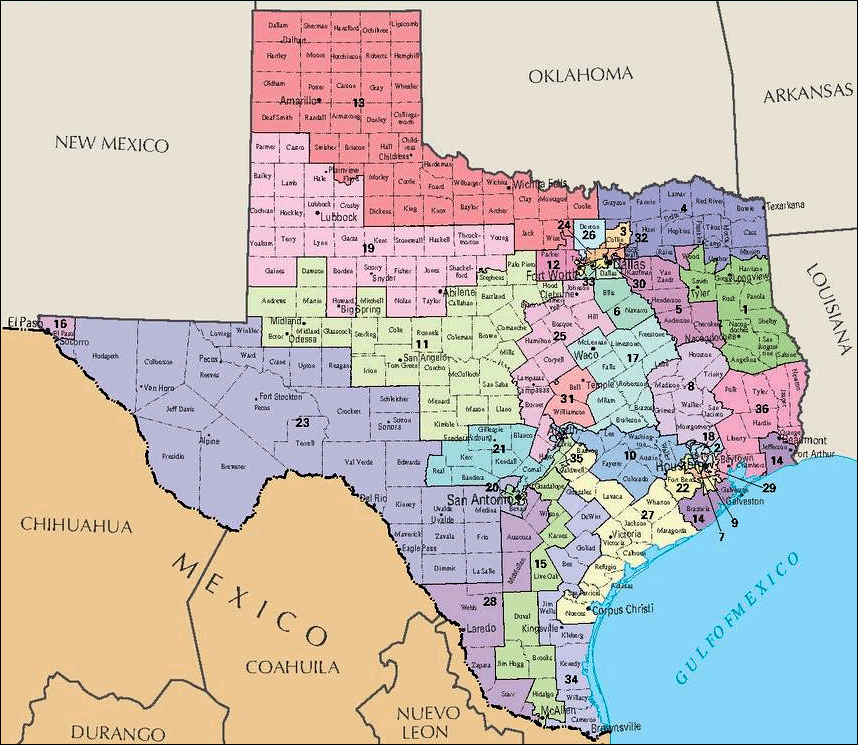By Jim Ellis
Sept. 27, 2021 — The new Texas congressional map has yet to be released and it may be some time before we see any progress being made toward passing a 38-seat federal plan.
While Gov. Greg Abbott (R) has called the legislature into a special redistricting session, the Democrats’ unified slow-walking strategy may achieve their goal of taking the process away from the Republican legislature and forcing a court to draw an interim map.
The state House of Representatives is the key. While Republicans have an 82-66 majority with two vacancies, it is the Democrats who have consistently been able to coalesce with a few moderate Republicans to elect a minority speaker, in other words a Republican who is in office largely through unified Democratic support.
In this session, the speaker is Rep. Dade Phelan (R-Beaumont), and with the House members indicating they are not moving any map until they agree upon their own new districts, and the Democrats unified to oppose any Republican map at any level, we could see a long redistricting process evolve.
Complicating matters is that Texas has an early primary, and it’s still on the books for March 1. The Census Bureau delaying in getting all the states their census tract data for months, which contain the numbers necessary to draw legal districts, has caused further delays. Therefore, either the process must accelerate or the state will be forced to postpone its primary. Doing so would also defer the May 24 runoff elections for those primaries in which no candidate receives majority support.
Texas cannot default to the previous congressional map. The state was awarded two new seats in reapportionment, so a new map must be constructed. A court could conceivably postpone redistricting, revert to the former map, and order the candidates for the two new seats to run statewide. There is precedence for such a decision.
Currently, the Texas congressional delegation stands at 24 Republicans and 12 Democrats. Where the two new seats will land is subject to debate. Of the 36 current seats, 28 are over-populated and led by freshman Rep. Troy Nehls’ (R-Richmond) 22nd District, which holds 972,309 people according to the 2020 census count. In all, six districts have more than 900,000 people. The Texas target population number is 766,987 residents.
There are three 900,000-plus CDs from the Dallas-Ft. Worth region (Michael Burgess, TX-26; Van Taylor, TX-3; Kay Granger, TX-12), two from the Houston area (Nehls, TX-22; Kevin Brady, TX-8), and one (Michael McCaul, TX-10) from the Austin-Houston corridor.
The change in the past year’s actual numbers versus the previous census estimates were substantial. Despite the growth in both DFW and Houston, two districts — one in each place — must surprisingly gain population. In the DFW corridor, Rep. Marc Veasey’s (D-Ft. Worth) 33rd District is 46,343 people low. In Houston, Rep. Sylvia Garcia’s (D-Houston) 29th CD is 49,732 residents short of the ideal 766,987 individuals.
The shortfall in each of those metro areas suggest that Houston and Dallas won’t get both seats. Central Texas, and more specifically the Austin-San Antonio corridor, is also over-populated, indicating that a new seat could possibly be placed there. Further speculation suggested that South Texas might be in line for an additional district, but the actual population numbers don’t support such an assertion.
Additionally, in the 2020 elections, both parties had multiple members record victories with 52 percent of the vote or less. Therefore, each party will want to strengthen those districts in order to better secure the incumbents. Republicans had several in this category around Dallas County. Democrats saw their numbers drop precipitously among the Mexican border districts.
The final population numbers don’t make it obvious as to how the important Texas map might be drawn. Therefore, we could see some surprises coming from the Lone Star State, especially if the Democratic legislative strategy successfully forces the process into the courts.

